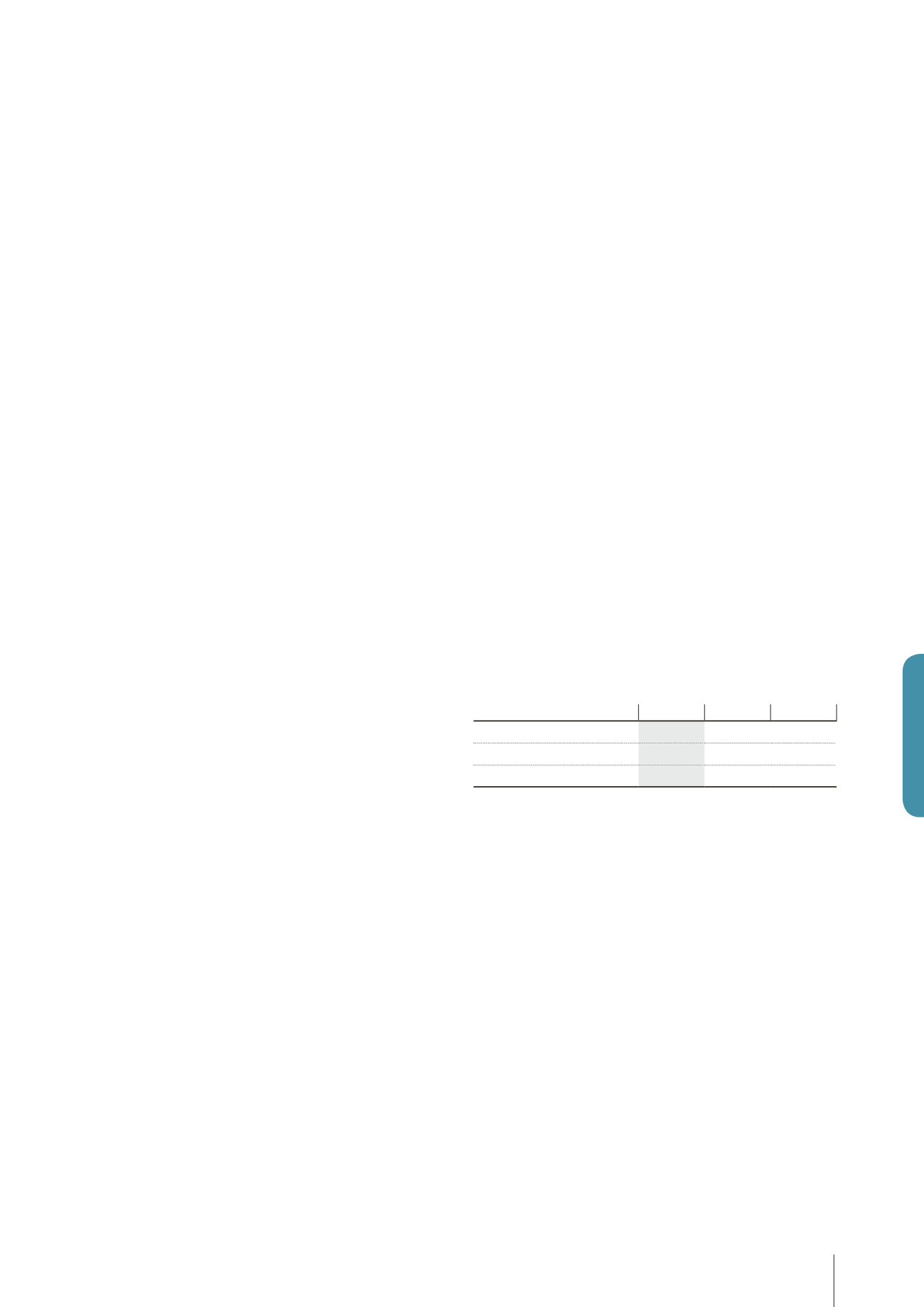
 95
LISI 2018 FINANCIAL REPORT
RISK FACTORS
5
95
LISI 2018 FINANCIAL REPORT
RISK FACTORS
5
2.4
I
Legal risks
The Group is involved in a limited number of legal proceedings with third
parties (not customers). All these disputes have been reviewed with our
Auditors and the most significant were appreciated by the Audit
Committee. Generally speaking, all legal positions are determined and
reviewed by third-party and in-house specialists.
Except for the disputes referred to above, for a period covering at least
the last 12 months, no governmental, legal, or arbitration proceedings
(including any proceedings of which the Group is aware, which is pending
orofwhich it isthreatened)thatmayhaveorhaverecentlyhadsignificant
effects on the Group’s financial situation or profitability have been
reported. The amount of provisions for legal risks found at December 31,
2018 is not material.
2.5
I
IT-related risks
For each of its divisions, the Group has identified an IT safeguard action
plan likely to be implemented in the event of a serious failure. In addition,
the Group has insured risks of interruptions and malfunctions, or forced
use, of its IT systems with a specific policy.
The cybercrime risk was evaluated as part of the LISI risk mapping
process, in the same manner as all the other risks. It covers any risk of
large-scale attacks harming the operation of the organization, taking
over control of the means of production, hacking of data, ransomware
(1)
or fraud.
Due to its BtoB activity
(2)
, the Group is exposed to a risk of large-scale
indiscriminate attacks with potential impacts on the whole IT
infrastructure.
LISI has therefore implemented measures to reduce the risk level by
dealingwith the root cause. A raft of tailored technical measures is being
rolled out across the Group. Cyber-security governance completes
this system. It is headed up by the Information Systems Departments of
the three divisions and is coordinated by the LISI Head of Strategy,
Organization and Information Systems.
Atrainingplanisenvisagedtoenableemployeestousethetechnicaltools
at their disposal. All of these measures also make it possible to
significantly reduce other risks, such as leaks of industrial or personal
data and risks of fraud.
2.6
I
Other risks
2.6.1
I
Raw materials risks
The LISI Group is potentially exposed to changes in the costs of the raw
materials (steel, alloys, plastics, aluminum, and titanium) used in the
courseofitsbusinessactivities.Nevertheless,theGroupdoesnotbelieve
that such price increases are likely to have a major negative impact on
its results over the long term. Some commercial contracts include
price‑revision formulae which allow selling prices to be adjusted in
responsetochangestorawmaterialcosts,orinvolveanegotiationperiod
beforerawmaterialcostrisescanbereflected insellingprices.Suppliers
(1) Ransomware: malware which threatens to publish personal or business data or perpetually block access to it unless a ransom is paid
(2) BtoB (Business to Business): business activity between companies i.e. business in which its customers are companies
work to limited time frames based on guaranteed-price contacts.
At December 31, 2018, LISI Group used financial instruments to manage
its long-term exposure to nickel and aluminum price changes. The
amounts hedged are not significant. It can also benefit fromagreements
with suppliers to hedge against annual or multi-year periods to limit the
impact of fluctuations in certain ore prices.
2.6.2
I
Energy-related risks
To cover its energy costs, the Group entered into a supply contract with
electricity company EDF for its French sites (due to expire at the end of
2019). For foreign sites, similar contracts have also been entered into,
particularly in Germany and the UK.
2.6.3
I
Commercial risks
For the record, the Group manufactures thousands of different items
using various raw materials (steels, alloys, aluminum, various plastics,
titanium, etc.) and employing a wide range of technologies (cold and hot
forging,forming,machining,dietrimmingandstamping,plasticinjection,
heat and surface treatment). Business risk, representing the risk of loss
of contracts related to a product, is thus spread over a considerable
numberofproductsmanufacturedattheGroup’s48globalsites.Themain
product families are developed in collaboration with customers, and the
proportion of sales revenue from patented products plays only a
secondary role in total consolidated sales.
2.6.4
I
Customer-related risks
Lookingatthefiguresfor2018,onlythreeclientsaccountedformorethan
5% of the LISI Group’s consolidated sales. The 10 largest customers
accountfor56%oftotalsales;this list includescustomeraccountsofthe
three divisions: LISI AEROSPACE, LISI AUTOMOTIVE and LISI MEDICAL.
41 customers account for 70% of sales. Figures for our three largest
customers have evolved as follows:
2018
2017
2016
Customer A
15.6% 14.1% 11.7%
Customer B
15.2% 20.1% 17.1%
Customer C
5.4% 5.9% 5.9%
2.6.5
I
Product-related risks
The LISI Group is exposed to the risk of actions for liability or to enforce a
guarantee by its customers regarding products sold. It is also subject to
liability actions in the event of product fault leading to injury or damages.
To protect itself against such risks, as described in paragraph 3 below,
the LISI Group has third-party liability cover for use of its products after
delivery. The LISI Group’s liability is often limited to compliance with the
original product specifications or customer-defined specifications;
it cannot be extended to the ways in which products are used. However,
it is possible that the insurance policy taken out may not be sufficient to
cover every possible financial consequence linked to such claims,
particularly in the USA. This is why the LISI AEROSPACE division has set
up an additional provision for product liability in the amount of 1% of the
sales revenue.


















